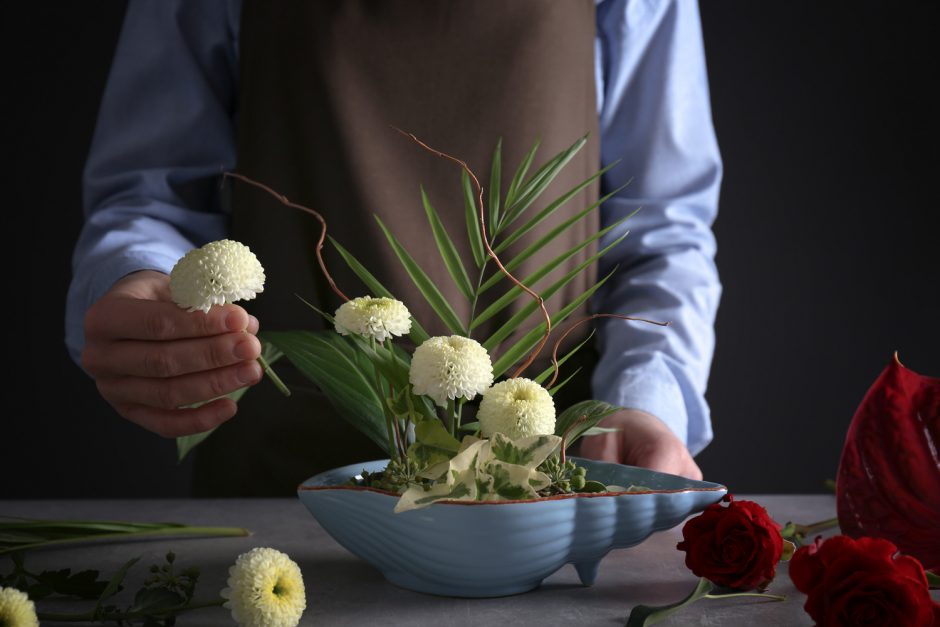For as long as human society has existed, flowers have been used as a symbol to express admiration, joy or sorrow. As such, the art of flower arrangement usually employs the vibrant colours and shapes of flowers to convey a desired message or expression. However, the Japanese floral art of Ikebana, takes on a philosophical and spiritual dimension.
Derived from the Japanese word ‘ikeru’, which means ‘to keep alive’ and ‘hana’ for ‘flower’, Ikebana can trace its origins back by 1,400 years to Buddhist rituals of flowers offerings at altars. Steadily, over the centuries, artisans began evolving the art form, taking influences from religious texts, contemporary architecture of the time, and even philosophical ideas of balance between man and nature. For many centuries, Ikebana was the exclusive art of the monks and aristocracy of Japanese society. However, the period of stability and prosperity of the 17th-century Edo period saw the art form being practised by the wealthy merchant and powerful samurai classes.
Ikebana’s remarkable development from a mere religious obligation to a fine art form can be attributed to the Japanese love for nature. The beauty of Ikebana lies in its simplicity and minimalistic approach which is based on the scalene triangle principle. The arrangement is often used to portray the beauty of nature.
In fact, the Japanese have always felt a strong bond of intimacy with their natural surroundings. They love to have a bit of nature around them always. You will also notice that the Japanese houses have some sort of floral arrangement at all times.
The materials used are living branches, leaves, grass, and blossoms. The beauty resulting from colour combinations, natural shapes, graceful lines makes Ikebana much more than mere floral decoration.
The spiritual aspect of ikebana is believed to instil patience and tolerance towards things and people around you. It helps the practitioner to live ‘in the moment’ and to appreciate things in nature that seemed insignificant and unimportant.
Today, Ikebana is still a highly respected cultural art form in modern-day Japan. It is used widely in Japanese weddings, not just for ornamental purposes but also to symbolise their culture and bring a sense of harmony between the couple, and if you were to visit Tokyo, don’t be surprised if you find a vase with a flower or two hanging at the edge of the windshield of your taxi.






You must be logged in to post a comment.